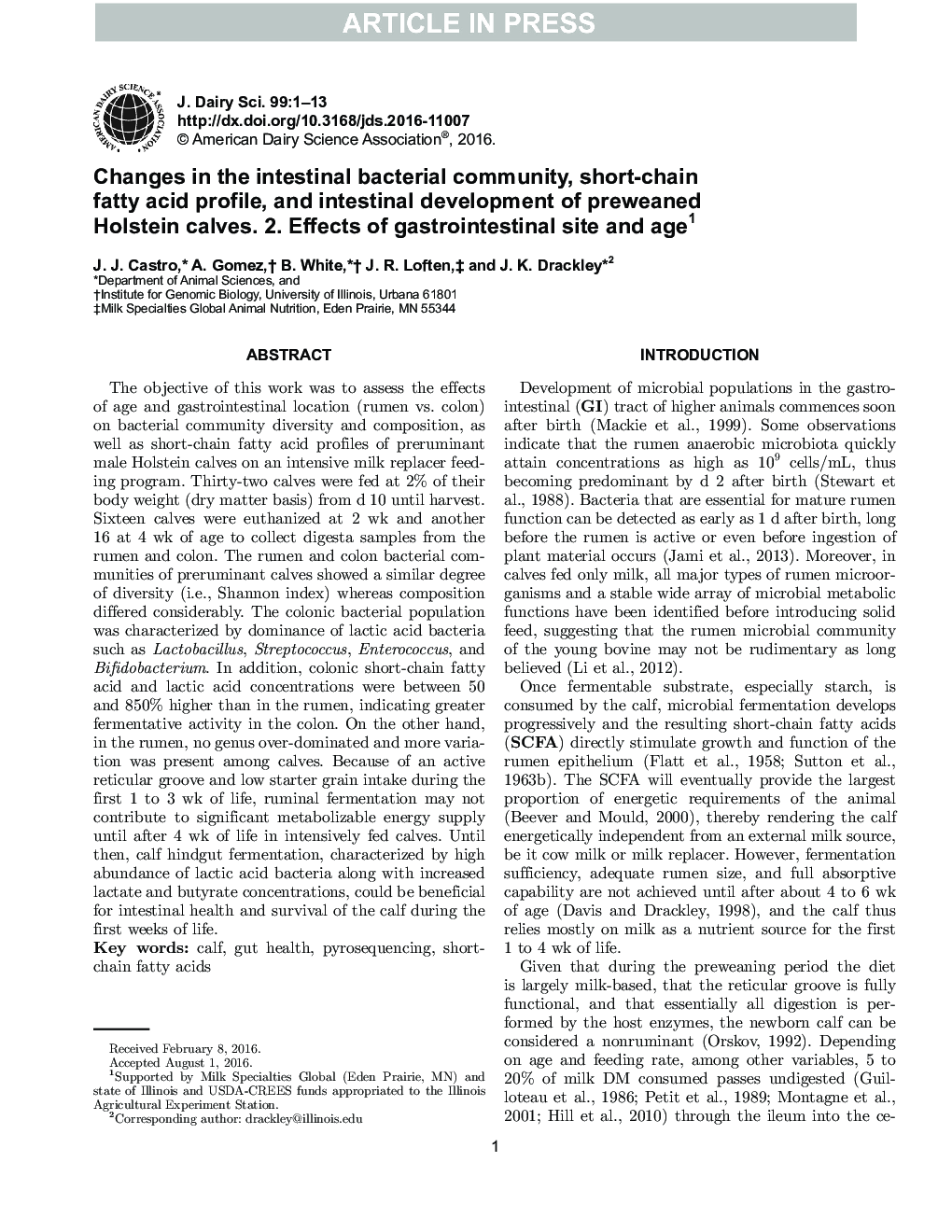| کد مقاله | کد نشریه | سال انتشار | مقاله انگلیسی | نسخه تمام متن |
|---|---|---|---|---|
| 5542742 | 1402522 | 2016 | 13 صفحه PDF | دانلود رایگان |
عنوان انگلیسی مقاله ISI
Changes in the intestinal bacterial community, short-chain fatty acid profile, and intestinal development of preweaned Holstein calves. 2. Effects of gastrointestinal site and age1
ترجمه فارسی عنوان
تغییرات در جامعه باکتری روده، پروتئین اسید چرب کوتاه مدت و رشد روده گوساله های پیش از زایش هلشتاین. 2. تأثیر محل سکته های دستگاه گوارش و سن 1
دانلود مقاله + سفارش ترجمه
دانلود مقاله ISI انگلیسی
رایگان برای ایرانیان
کلمات کلیدی
موضوعات مرتبط
علوم زیستی و بیوفناوری
علوم کشاورزی و بیولوژیک
علوم دامی و جانورشناسی
چکیده انگلیسی
The objective of this work was to assess the effects of age and gastrointestinal location (rumen vs. colon) on bacterial community diversity and composition, as well as short-chain fatty acid profiles of preruminant male Holstein calves on an intensive milk replacer feeding program. Thirty-two calves were fed at 2% of their body weight (dry matter basis) from d 10 until harvest. Sixteen calves were euthanized at 2Â wk and another 16 at 4Â wk of age to collect digesta samples from the rumen and colon. The rumen and colon bacterial communities of preruminant calves showed a similar degree of diversity (i.e., Shannon index) whereas composition differed considerably. The colonic bacterial population was characterized by dominance of lactic acid bacteria such as Lactobacillus, Streptococcus, Enterococcus, and Bifidobacterium. In addition, colonic short-chain fatty acid and lactic acid concentrations were between 50 and 850% higher than in the rumen, indicating greater fermentative activity in the colon. On the other hand, in the rumen, no genus over-dominated and more variation was present among calves. Because of an active reticular groove and low starter grain intake during the first 1 to 3Â wk of life, ruminal fermentation may not contribute to significant metabolizable energy supply until after 4Â wk of life in intensively fed calves. Until then, calf hindgut fermentation, characterized by high abundance of lactic acid bacteria along with increased lactate and butyrate concentrations, could be beneficial for intestinal health and survival of the calf during the first weeks of life.
ناشر
Database: Elsevier - ScienceDirect (ساینس دایرکت)
Journal: Journal of Dairy Science - Volume 99, Issue 12, December 2016, Pages 9703-9715
Journal: Journal of Dairy Science - Volume 99, Issue 12, December 2016, Pages 9703-9715
نویسندگان
J.J. Castro, A. Gomez, B. White, J.R. Loften, J.K. Drackley,
